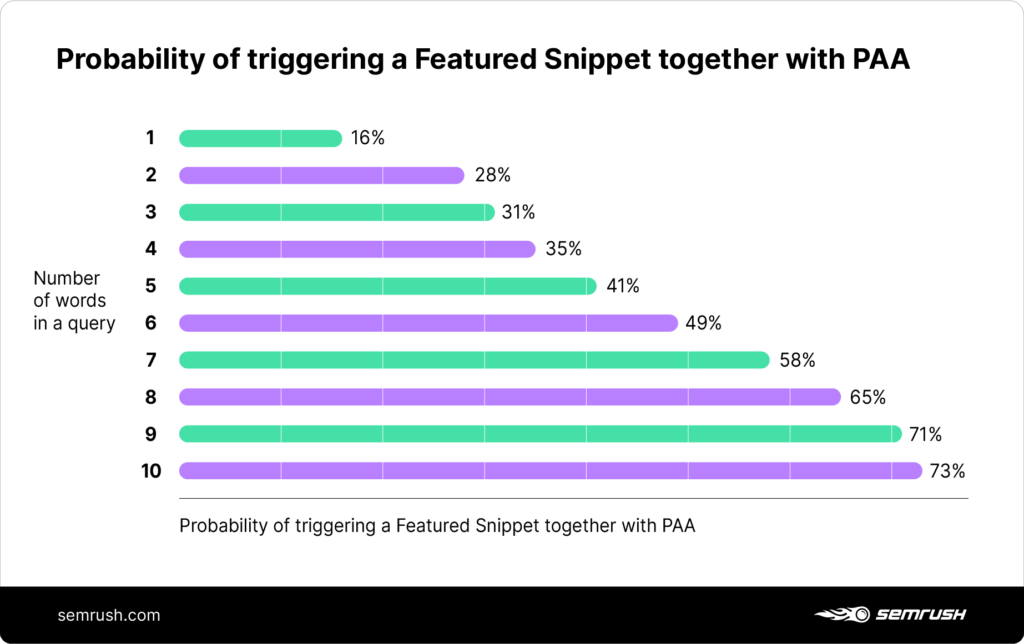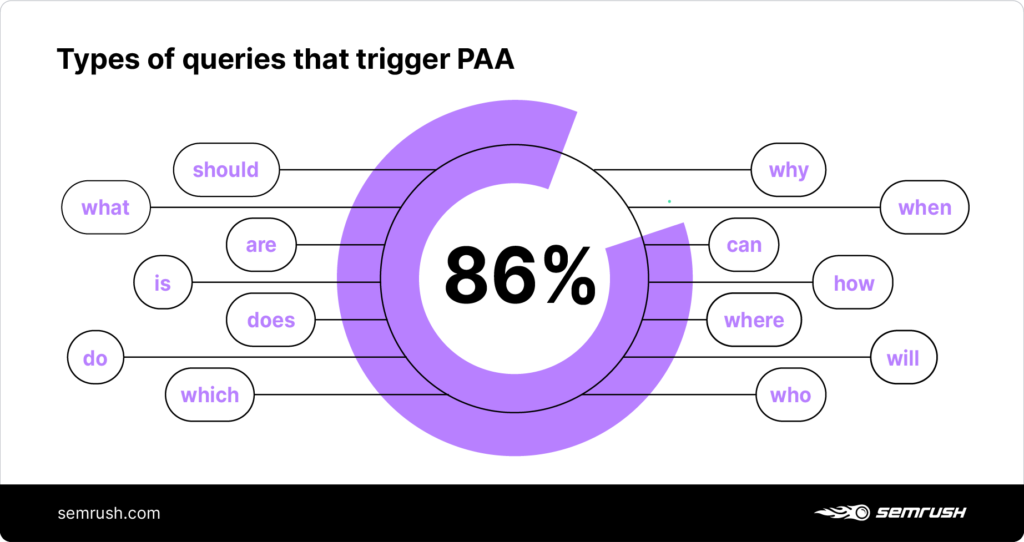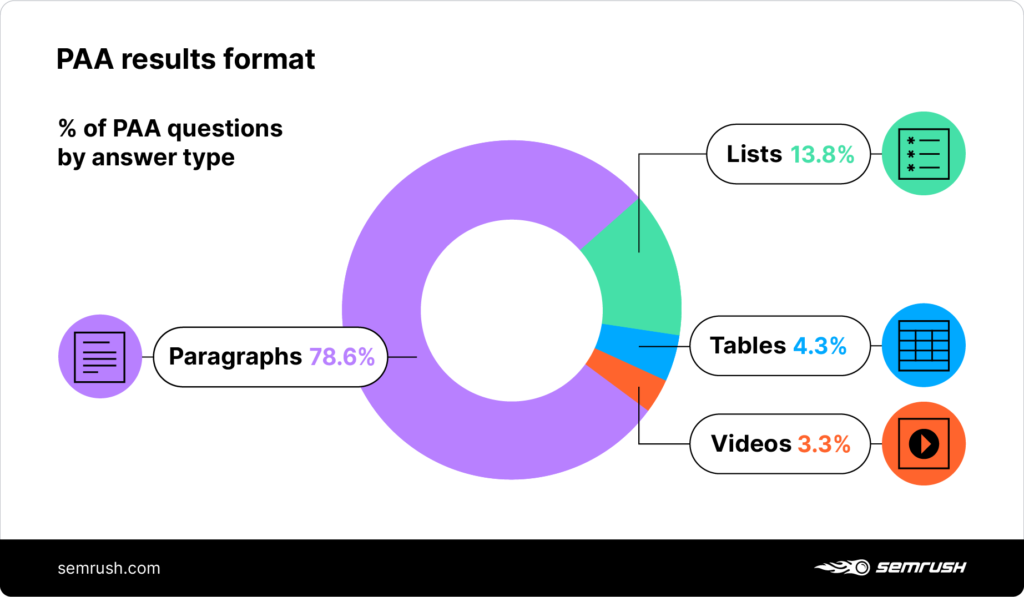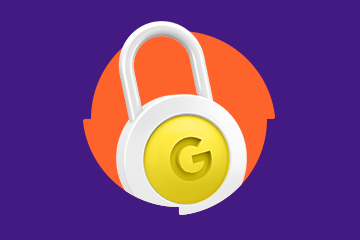30-second summary:
- Signaling rapid growth, PAA boxes are now present across half of all SERPs.
- With 75% of PAA results appearing within the top three results in Google, the PAA block opens up visibility opportunities for sites that are struggling to make it to the first page of Google’s SERP.
- The key to PAA success lies in producing PAA-friendly content that meets PAA best practices – from tackling longer search queries to focusing on brevity and including question words.
With the rise of voice assistants and Google’s mission to turn into a “knowledge engine”, we can spot the proliferation of Google’s SERP features that support these shifts. Embracing these trends, SEMrush decided to take an in-depth look at Google’s ‘People also ask’ (PAA) feature and analyze its ins and outs to help businesses get more visibility with PAA boxes.
Presenting the key highlights from a recent SEMrush 2020 ‘People Also Ask’ study that analyzed over one million keywords for the US, this post provides insights into building a PAA-centered SEO and content strategy.
The rise of the ‘People also ask’ feature
According to SEMrush Sensor, the number of SERPs containing a PAA box has grown by 40-42% since the feature was first introduced back in 2015.
PAA appears to be present within half of the search results pages, with a slight increase when looking at mobile search results. In fact, Google is now six times more likely to return a SERP with a PAA box than with a featured snippet result.

Note: The drop on the chart comes as a result of Google’s March 2020 adjustment
Although remarkable, this trend towards PAA expansion is not consistent across all industries. With the lowest presence of PAA within the Real Estate industry (9.5%), the highest number of PAAs was spotted within the Computer & Electronics category (64.2%).
The full industry breakdown can be found in the study.
The nature of PAA
On average, the initial PAA block includes four questions:

While in 58% of all cases analyzed the PAA box appears after the first organic result – be it a regular blue link or a featured snippet – in 75% of cases, it is featured within the top three results.
Hidden opportunities
Although 13% of sites making it into the PAA box have a top three ranking, 74% aren’t even present within the first page of the SERP. This implies that the PAA feature opens up opportunities for sites that cannot immediately boost their organic rankings to appear on the first page of search results.
To leverage this opportunity, though, they should understand the inherent features of PAA and meet some of the key requirements we managed to spot.
Unleashing the power of ‘People also ask’
To understand how to leverage the PAA feature for your site and overall business, we have to examine which features impact the occurrence of a PAA block and which ‘content factors’ effect Google’s decision to include this or that piece of content within the PAA box.
‘Outside’ factors, or PAA-centered keyword optimization
1. Search query length
PAAs normally get triggered by longer keywords or complex search queries. With a clear correlation between the length of a search query and a PAA, we can see that a 10-word keyword triggers a PAA 72% of the time, while search results for a two-word query only showcase a PAA in 28% of the cases:

2. Search query type
Questions or question-type queries tend to produce SERPs with a PAA block. 86% of the time, search queries starting with question words like “what”, “why”, “when”, “where” and “who” trigger a PAA.

‘Inside’ factors, or PAA-worthy content features
79% of PAA boxes are filled with paragraphs taken from website content, followed by lists (13.8%) and tables (4.3%).

1. Paragraph length
The average number of words within a paragraph featured in PAA stands at 41 words, implying that brevity is a valuable asset when crafting content for a site.
2. List length
Within our dataset, we found no lists that went over 8 items, with the minimum length standing at a mere two items.
3. Table length
A standard PAA box has space for 14 rows and three columns, although we saw tables that only showed one column and two rows. Since the tables are less popular, we couldn’t make any conclusions regarding best practices when it comes to creating tables specifically for PAA.
Action plan for businesses willing to optimize for PAA
If today optimizing for PAA is a matter of wants, tomorrow, it could be a matter of needs, as search is already moving towards providing users with instant answers at their first command, be it voice or text.
The best feature of PAA is that it’s often a quicker win strategy than a more long-term traditional “blue link” ranking optimization.
In a nutshell, PAA optimization comes down to the following key steps:
- Reviewing existing SERP features, where it all starts with analyzing if your target keywords currently trigger any PAAs.
- Discovering missing opportunities by exploring whether your or your competitors’ site ranks for the keywords that generate a PAA block within the SERP but do not appear within the PAA box.
- Uncovering ideas for PAA-worthy content by integrating the keywords within the PAA box into your keyword strategy and using the PAA block as a goldmine for content ideas.
- Ensuring your content is as SEO optimized as it gets.
Olga Andrienko is SEMrush’s Head of Global Marketing. Olga can be found on Twitter @Olgandrienko.







